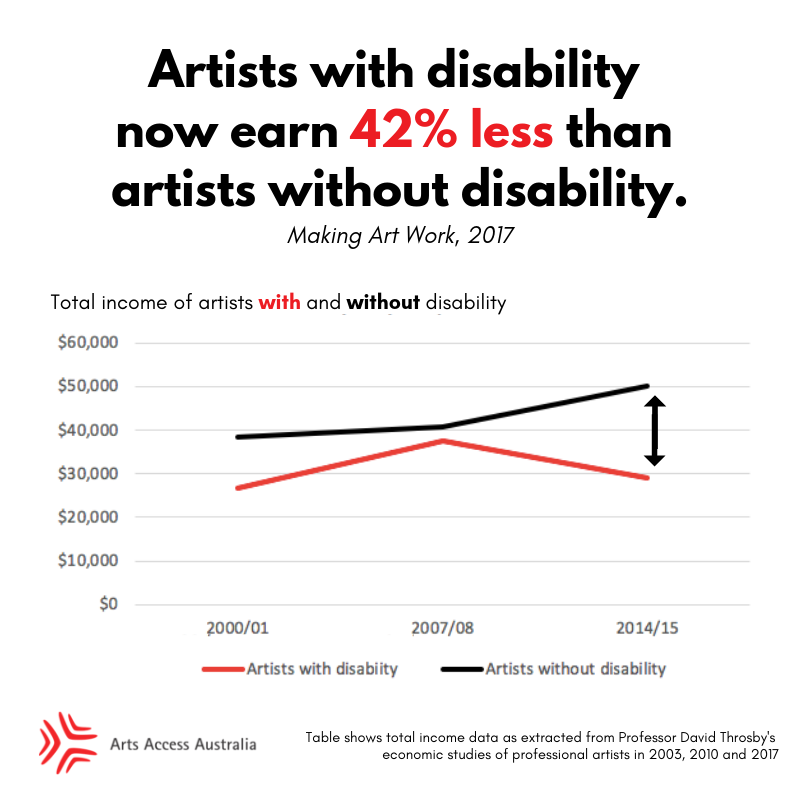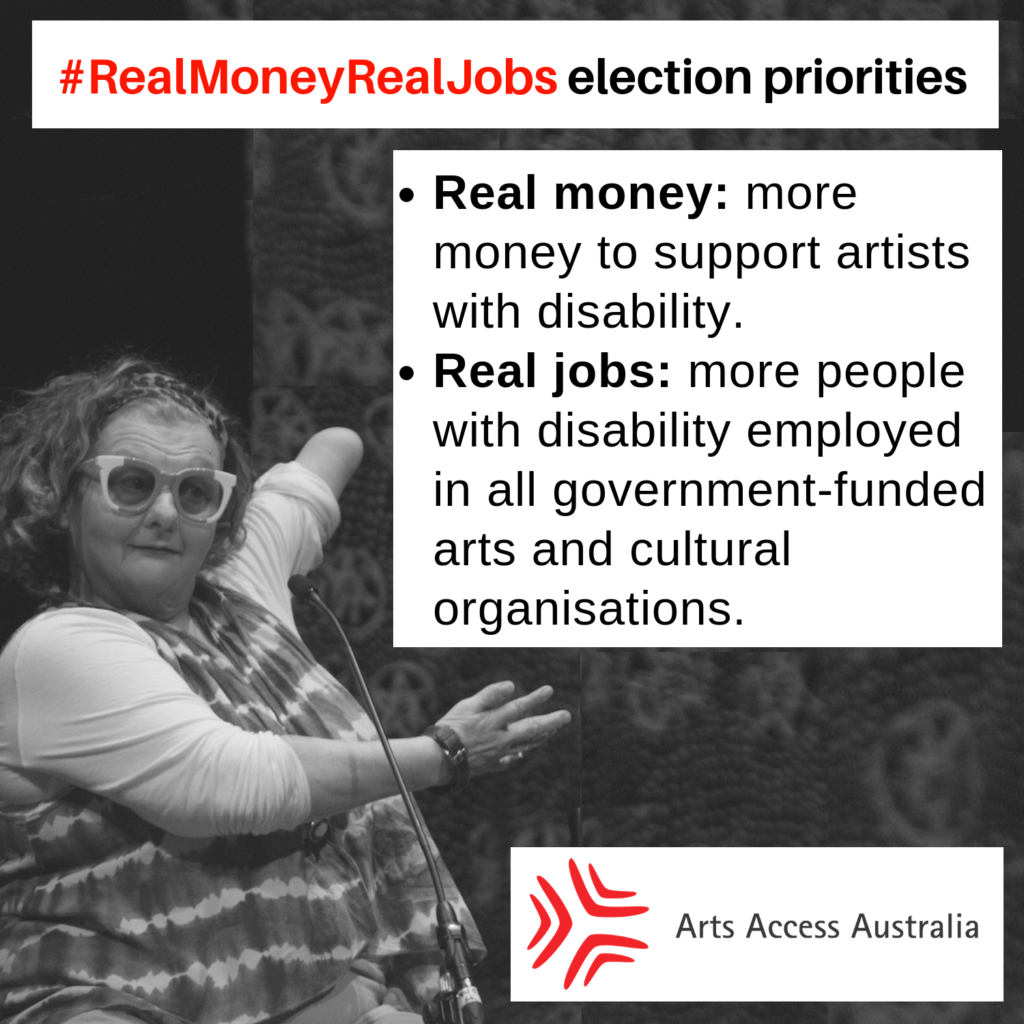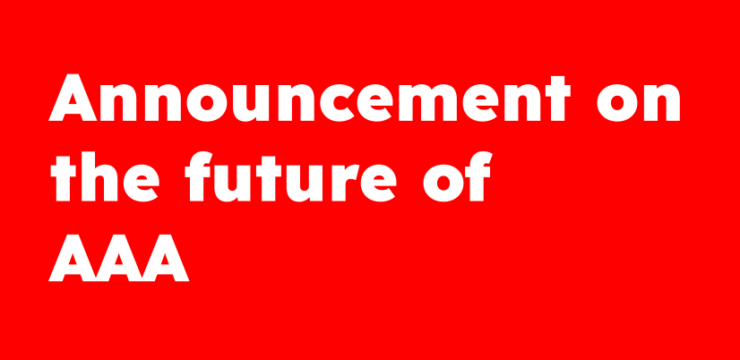We need to close the disability pay gap for professional artists
 The disability pay gap for professional artists. Data drawn from Making Art Work, 2017.
The disability pay gap for professional artists. Data drawn from Making Art Work, 2017.The message arose out of last year’s national forum on arts, culture and disability, Meeting Place. Each year, the forum dedicates a portion of its program to a disability-only discussion between artists, providing a safe and inclusive space where all participants feel welcome to contribute their ideas, experiences and concerns.
The focus on real money and real jobs comes in response to recent research that revealed artists with disability in Australia can expect to earn 42% less overall than other artists. In 2008, that gap was just 9%.

Graph shows total income for professional artists with and without disability from 2000 to 2015. Data drawn from from Professor David Throsby’s economic studies of professional artists in 2003, 2010 and 2017.
Artists in Australia already face economic disadvantage, earning around two-thirds of the average wage. But for artists with disability, the figure falls to around one-third – or just above the poverty line.
The recent funding provided through the Australia Council for the Arts is a step in the right direction. However, the $750,000 commitment falls short of the $1 million previously invested and pales into insignificance when compared to what’s happening on the world stage. In the UK, for example, the Arts Council of England set the precedent in 2013 to ensure that “no Deaf or disabled artist experiences a barrier to realising their ambitions” and made a £1.5 million investment in UNLIMITED. This investment led to a boom in the industry, positioning UNLIMITED as the largest supporter of disabled artists worldwide. In 2016, they committed a further £1.8 million. In contrast, Australia is failing its artists with disability who remain limited by government funding and policy structures that fail to properly invest in their development.
While our unstable political landscape and economic downturn post-mining boom are partly to blame for the reduced funding, Australia also lags behind on its commitment to employment outcomes for people with disability. Labour force participation rates for people with disability have remained relatively unchanged for 20 years, ranking the ‘lucky country’ a low 21st out of 29 OECD nations. Again, the UK leads the way, with the government recently committing to double the number of people with disability employed in the arts and cultural sector by 2020.
If our limited job opportunities weren’t enough of a problem, artists with disability also face high levels of workplace discrimination. Not only are people with disability made to feel as though the arts isn’t a viable professional career, but when they do find paid work around one in four will experience discrimination from their employer. Though disability awareness training has been shown to significantly improve workplace participation, an estimated 60% of arts organisations do not have a Disability Access and Inclusion Plan in place.
Because of the above factors, it perhaps isn’t surprising to find that artists are also significantly under-represented in the arts. While 9% of professional artists identify as having disability, the proportion of the general population who have disability is almost double. How can we hope to achieve an authentic exploration of our nation’s diverse perspectives if we do not have equal representation in the arts?
Everyday, our artists with disability are confronted with the burden of attitudinal and environmental barriers. Not only that, as artists, they belong to an industry that is increasingly under-valued by society (over the past seven years, artists’ income from creative work dropped by 19% – even while creative output remained the same).
Yet, our artists remain hopeful and passionate. This is their livelihood, and they will rally and fight to achieve social justice and equity in the arts. Yes, they might earn less and feel their creative work is undervalued. But they are also twice as likely to donate their time and money to the arts than people without disability. And thanks to those attitudinal and physical barriers they are forced to navigate and overcome, they are probably some of the most creative people in Australia.
We say it is time for the government to show how much they value our artists with disability.
In the lead up to the next general election, we are calling on the government to provide:
- real money: more funding to support artists with disability; and
- real jobs: increased employment rates for people with disability in all government-funded arts and cultural organisations.
Read our full Election Score Card 2019 (doc, 44KB).
Please join us in asking the government for real jobs and real money for artists with disability. Send a letter to the government today. Because together, we can create real change.

Follow the conversation on Twitter: #RealJobsRealMoney
Latest Posts

Notice of Extraordinary General Meeting
An Extraordinary General Meeting of members of Arts Access Australia will be held on 14 October 2024 from 1:00pm (AEDT)

Announcement on the future of AAA
Arts Access Australia's Board of Directors' announcement of company's future operations.



